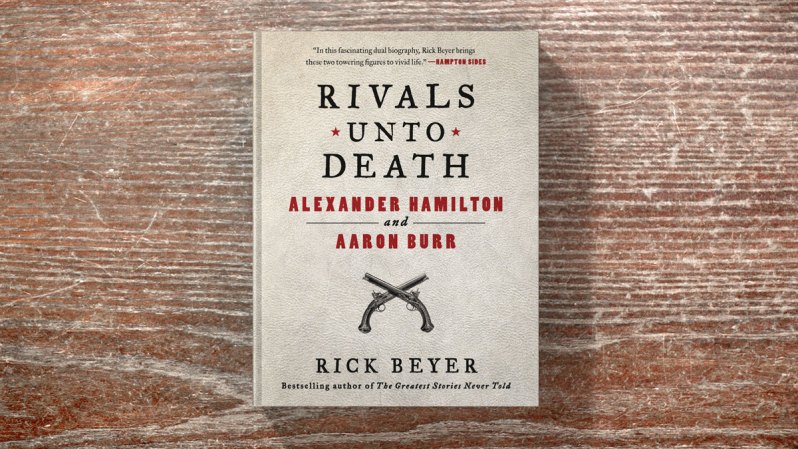
If you love reading about history but you don’t have the next three weeks free for a David McCullough tome, instead give Rick Beyer‘s latest book a try. Rivals Unto Death: Alexander Hamilton and Aaron Burr
Related:
If you want to know every single little detail about the life of Alexander Hamilton, you’re going to have to go beyond Rivals Unto Death and, yes, even beyond the fantastically successful hit broadway play (Hamilton, not The Lion King, is what I mean) and do some deep reading. This reading should probably include a few of The Federalist Papers

If you want to know all there is to know about Vice President Aaron Burr, who during his 80 year life served in capacities ranging from Continental Army officer to senator to Attorney General of New York, then you likewise have a few thousand pages of reading ahead of you.
If, however, you want to understand all the events that led up to the fateful date of July 11, 1804, on which Aaron Burr shot and mortally wounded Alexander Hamilton near Weehawken, New Jersey, then just read Rivals Unto Death. By focusing on the events that tied Hamilton and Burr together, dating back to their shared experiences while officers under Washington in the Continental Army, their proximity as New York City lawyers (they even served as co-counsels on a case or two), and of course their years of political rivalry as leading members of the newly minted Federalist (Hamilton) and Republican (Burr) parties and by leaving out many details not needed to color in these men as full characters or to illuminate their many periods of amity and enmity, Rick Beyer manages to keep his book trim and fast-paced without it feeling thin or rushed.

At the end of Rivals Unto Death — which you could read in one serious sitting, but which is best reserved for a three-day vacation or a couple of long flights — you will understand why these historical titans hated each other, what roles they played in the early days of American politics, and how generally incestuous and tenuous most aspects of the American experiment really were in those early days. Burr was almost elected president instead of Thomas Jefferson, for example, a fact that might never have been in question had Hamilton not penned a fiery essay decrying sitting president John Adams, a member of his own Federalist party.
Beyer’s writing is crisp and competent; he does not infuse any perceptible personal opinions or bias into the book, but instead keeps the prose neutral yet engaging. The book lacks the heavy footnotes or endnotes common in most history texts, but only die-hard historians will lament this absence — most readers tend to find heavy annotation distracting rather than enriching, anyway.
Rivals Unto Death definitely gives more attention to Hamilton than Burr, and in so doing, de facto paints the Secretary of the Treasury as more of the protagonist, with Burr as the antagonist. This could be called a skewed take on the history, but it’s also forgivable: frankly, Hamilton is the more interesting of the two men, and by being such a prolific writer and general loudmouth, he left more of a mark.
I also must add that I found a few passages here and there that, much to my delight, I read as a glimmer of modern commentary, such as this paragraph from page 131 in which perhaps Beyer quotes from and comments on Hamilton seemingly with an eye toward 21st Century affairs as well:
[Hamilton] berated [President Adams’] “disgusting egotism” and deplored his “ungovernable temper,” asserting that, “He is often liable to paroxysms of anger which deprive him of self-command and produce very outrageous behavior.”
Beyer goes on to add: “That sentence — describing Adams — succinctly depicted Hamilton himself.”
And who else does it describe? I’ll not editorialize further…
*That was a cheap shot by me, actually; Hamilton almost surely missed Burr deliberately. Duels of the day were more about showing your mettle by standing your ground than actually shooting the other guy. So FYI on that, Burr. Oh well.




